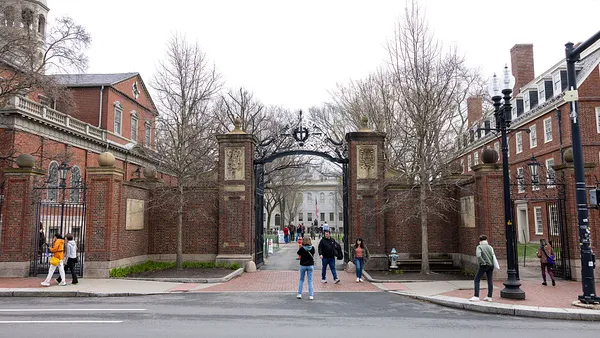Dive Brief:
- The cost of direct student loans made over the past 25 years is likely $311 billion higher than what the U.S. Department of Education estimated, the Government Accountability Office said in a new bombshell report released Friday.
- The congressional watchdog said the Ed Department forecasted the program would earn the federal government $114 billion, when in reality it has cost an estimated $197 billion as of fiscal 2021. The GAO said the government won’t know the actual price tag until the end of the loan terms.
- However, the GAO believes some of the increased costs, $102 billion, stemmed from pandemic-related relief provided to borrowers. Those include suspending loan repayments, the associated interest accrual and collections on debt.
Dive Insight:
The federal student aid structure has been under a microscope, in part because President Joe Biden has continually extended the pandemic-era pause on student loan payments.
He could do so again before the prohibition expires at the end of August. The Ed Department has instructed federal loan servicers to not send billing statements to borrowers, signaling payments may not resume.
Other elements of the federal aid system have also been under scrutiny. Only a fraction of borrowers eligible for the Public Service Loan Forgiveness program — which wipes away the debts of workers in fields like government and healthcare after a decade of qualifying payments — were able to secure debt cancellation. The administration has proposed regulations to reform PSLF.
And the Ed Department didn’t ensure that loans eligible for discharge under income-driven repayment plans, which bases monthly payments off of a borrower’s salary, had been canceled, the GAO said in April. The department also wants to revise income-driven plans through regulation, but has delayed the release of its plan.
The new GAO report details the department’s miscalculation with the financial aid system.
Some of the increased costs of the direct loan program came from pandemic-related relief. But the department also misjudged how loans would perform, the GAO said. It said $189 billion, about 61% of the new costs, related to new estimates on loan data, which included revised salary information of borrowers with income-driven plans.
In a written response to the GAO report, James Kvaal, the Ed Department’s top higher ed official, said the agency regularly updates the costs of the loan program. In some cases, these revisions occur because of changes in data availability and its methodology for estimating costs. He gave the example of how borrowers are now more heavily relying on income-driven plans, and so the department “made significant improvements in our income modeling and assessment of borrower characteristics.”
Kvaal added that the department strives for best estimates, but faces “some inherent uncertainty” evaluating costs.
Republican lawmakers were quick to condemn the administration over the GAO’s findings. Top House and Senate leaders on their respective education committees, including Rep. Virginia Foxx of North Carolina, released a joint statement Friday with sharp critiques.
“The GAO report is only the latest evidence that, at best, Biden’s Department of Education doesn’t have a clue about the real harm of its policies; at worst, the political appointees there simply don’t care and are unwilling to disclose the true costs to the American public,” the statement reads.















